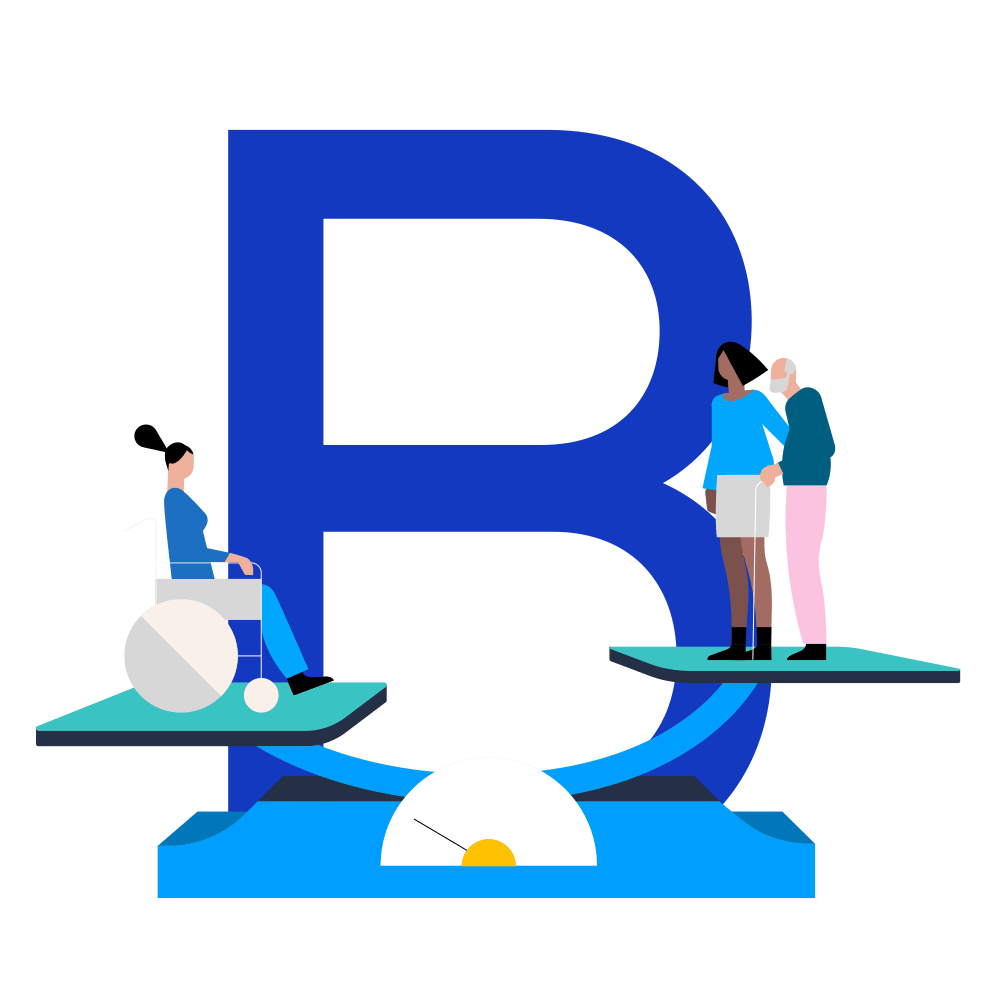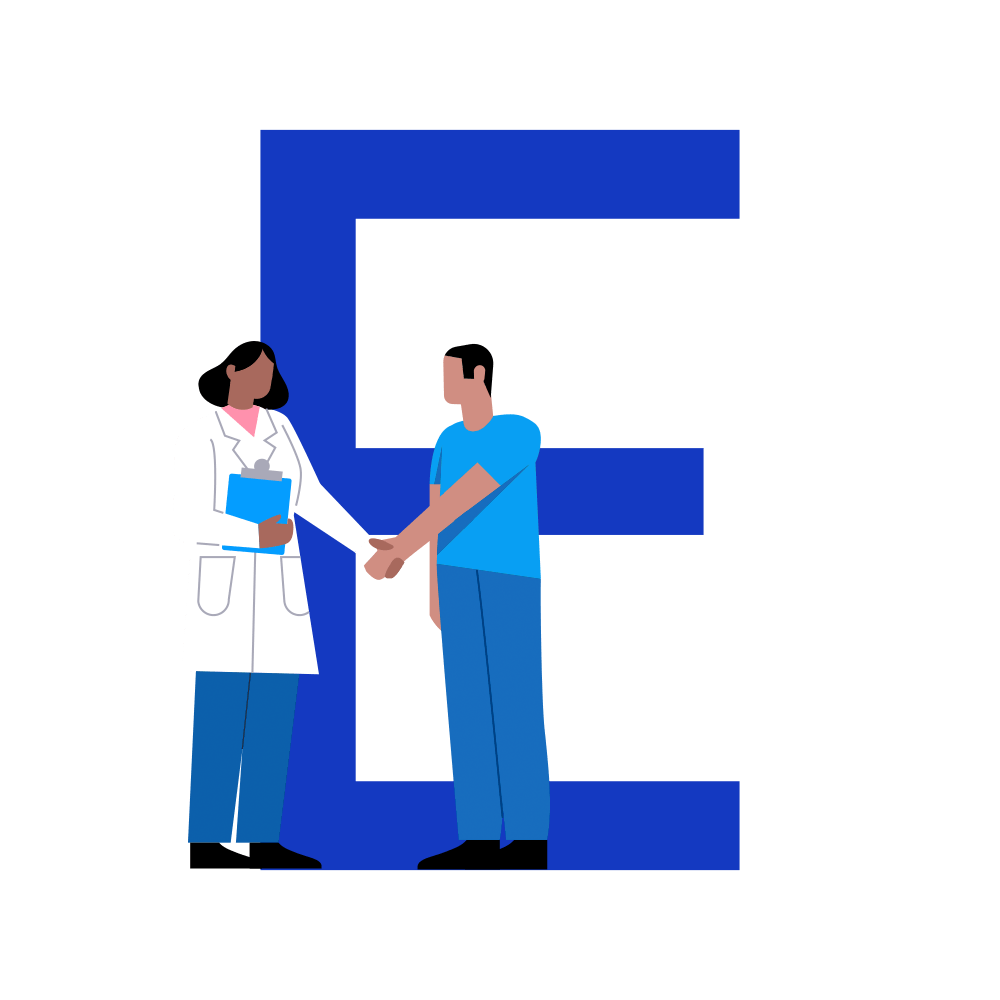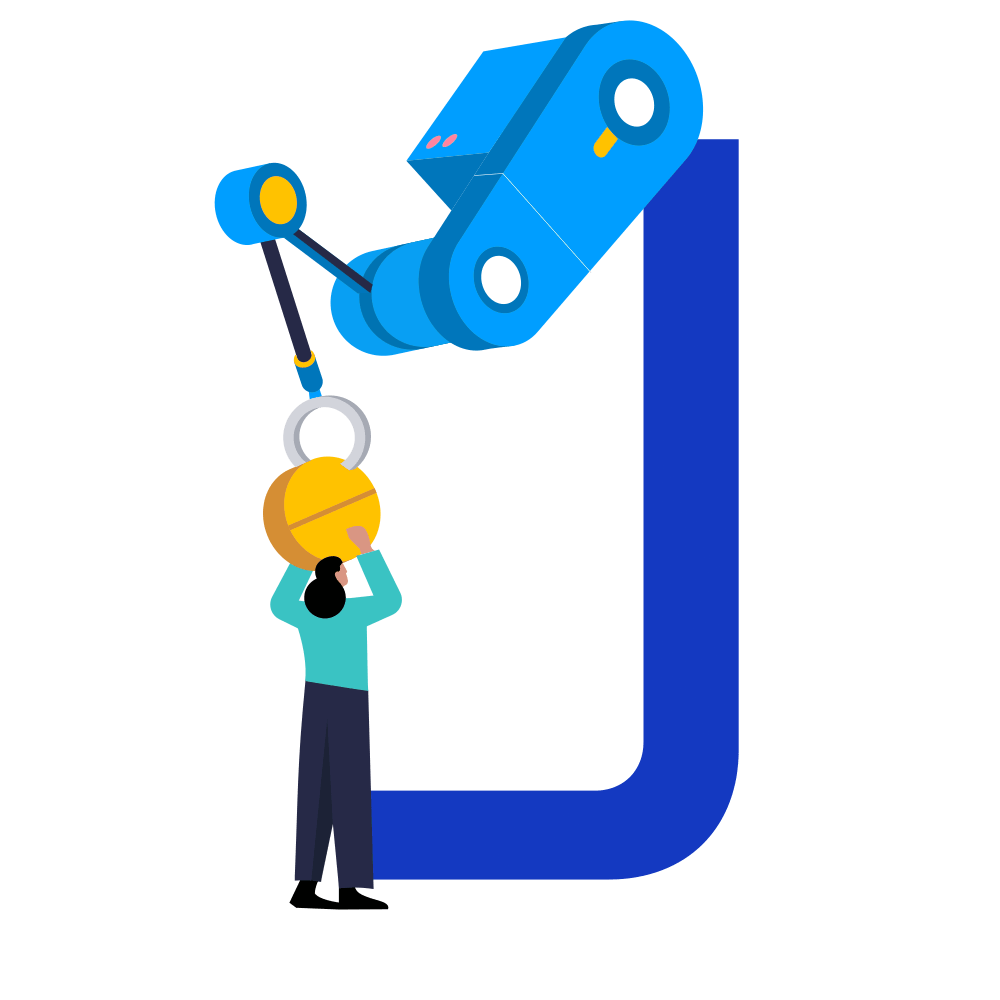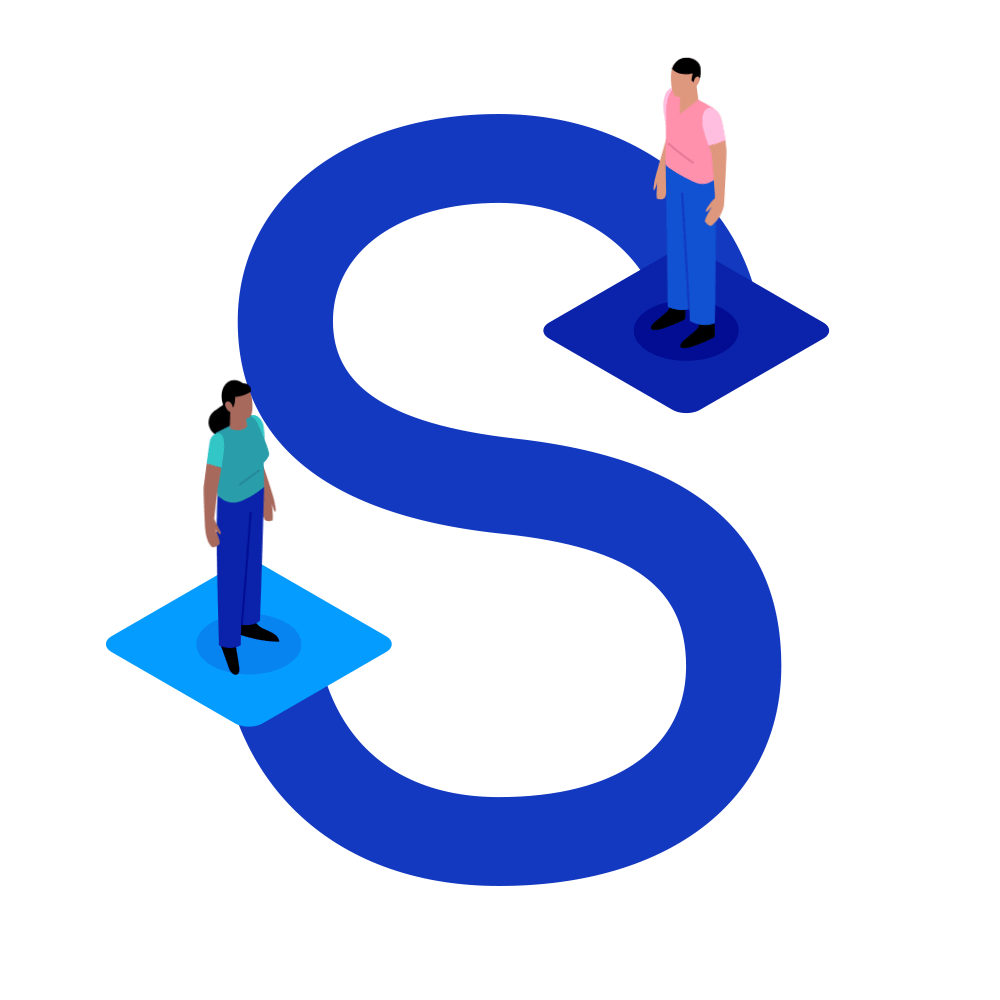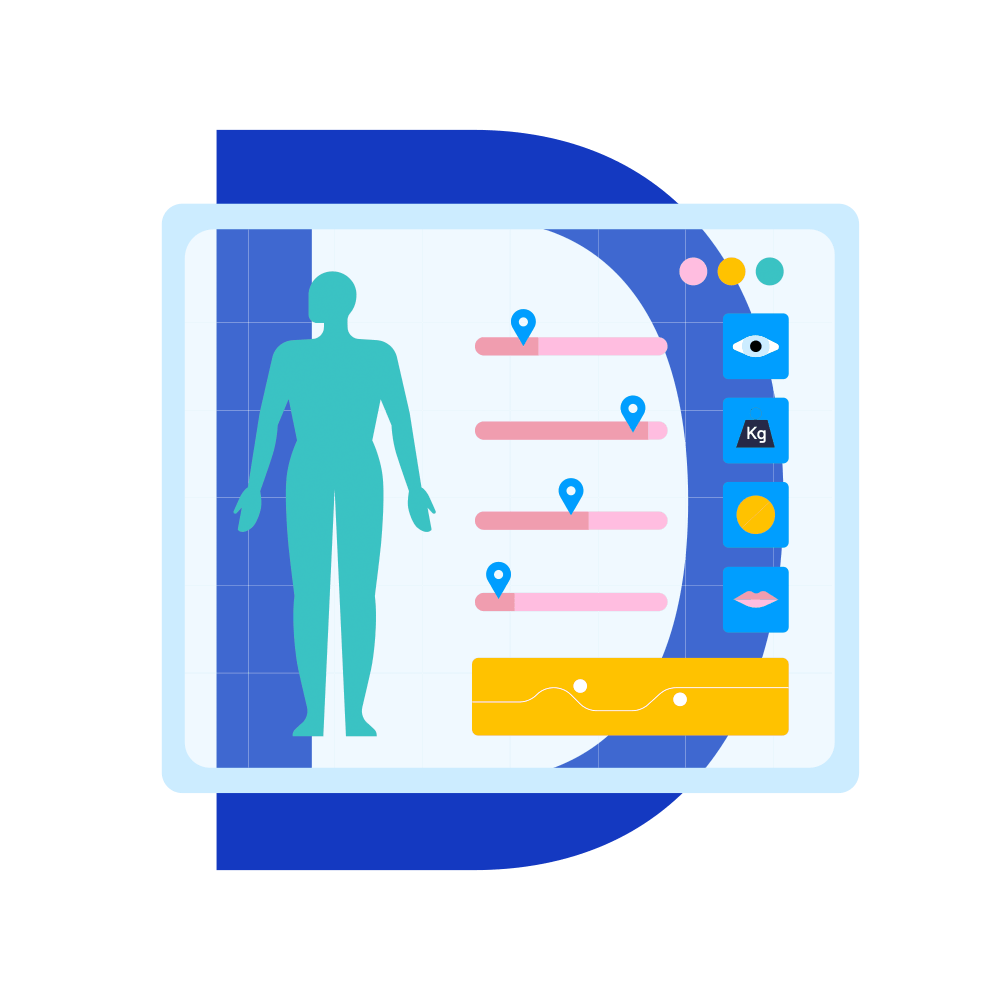
Digital Twin
A Digital Twin is an exact digital replica of a real-life person, thing, or process, that can exchange information with (or ‘talk to’) its real-life counterpart. They are created by collecting and integrating data from multiple sources.
How it works
‘The Sims’ is a popular life simulation computer game that allows players to create and control virtual characters (or ‘Sims’) in a household setting. Imagine that this game could create an exact replica of you including all your external attributes (e.g., your height, weight, eye colour) and your internal attributes (e.g., blood pressure, temperature, prescription medications). Then imagine that there is a connection between you and your Sim so that if something in your life changes, for example you lose weight, this change is automatically reflected in your Sim.

Next, imagine that you want to know what would happen to you if you changed your diet. To do this, you create multiple copies of your Sim and give them each a different diet: one is a vegetarian; one is a vegan; one is a pescatarian; one is an omnivore. You let the game run for a few days and see the effects of the diet changes on each of your Sims: one has lost weight; one is more tired than usual; one is in a happier mood, etc. You pick the Sim that has the best results according to you (for example the vegetarian Sim) and decide that you will make the change made by your Sim to yourself (i.e., you become a vegetarian). This is how a digital twin works.
Digital twins can be made for individual people, such as in the example above, but also for populations, hospitals, drugs, organs, or even processes. By experimenting with the digital twins of each of these things, making the desired changes in the real world and then monitoring the impact, researchers and doctors can make drugs that are safer and more effective, and improve healthcare systems.
A ‘Digital Twin’ is a digital representation, i.e., a simulation or a complex computer model, of a real physical ‘asset’ such as a specific organ, biological process, person, hospital, healthcare system, or population. The digital twin and the physical twin are connected by a bi-directional exchange of information (or data) known as a digital thread. This connection means that when something about the physical twin changes (for example, a new scanner is introduced into a hospital or a person is prescribed a new drug), the digital twin updates in near real-time, so that the effects of the change can be simulated, predicted, and monitored. The insights from the digital twin can then be passed back to the physical twin, enabling the outcomes of the change to be optimised.
There are three core components of a ‘digital twin’:
- The physical asset.
- The digital representation of that asset.
- The ‘digital thread’ tying the two together and enabling real-time bidirectional information exchange.
The near continuous exchange of information between the physical twin and the digital twin (which is what distinguishes digital twins from other types of simulation or modelling) is enabled by both the ‘Internet of Things’ (IoT) and Artificial Intelligence.
The IoT ensures multiple devices and sensors can be used to accurately measure the performance or functioning of as many different ‘features’ of the physical asset as possible. Artificial Intelligence enables the vast amount of data collected from all these different sources to be analysed and interpreted for a variety of different purposes.
When combined, these two enable digital twins benefit from what is known as ‘closed-loop optimisation’ i.e., where the impact of a change in a variable (for example, the number of calories eaten in a day) is simulated or predicted by the digital twin, the change is implemented by the physical twin.
The effects are then monitored by the digital twin via sensors recording physical attributes of the physical twin (e.g., weight loss or weight gain), and the digital twin adjusts the changes in the variables (e.g., increases the number of calories to be consumed to ‘optimise’ the outcome).
Here are some more examples of this process:
Digital Twin Patient
The creation of this twin might involve:
- a person having regular blood tests with the results being recorded in their electronic health record (EHR).
- using a wearable that tracks their exercise, sleep, heart rhythm, and more; tracking their mood via an app.
- monitoring their food intake via both their shopping record and a calorie-tracking app.
- setting up a number of sensors that monitor other ‘social determinants of health’ such as the air quality of the areas in which they live.
All this data is then collated and used to produce a virtual ‘avatar’ that has the exact properties of the physical patient. Artificial Intelligence is then used to predict what would happen to the digital twin if something about the physical twin’s life or environment was to change, for instance they changed their diet.
If the impact of this change was ‘positive’ then the digital twin could tell the physical twin to make the change and monitor the effect, or if the change was ‘negative’ then the digital twin could tell the physical twin to avoid making the change. Likewise, a sensor in the physical world could note that air quality had deteriorated and alert the digital twin who could simulate the effects and tell the physical twin to take steps that might counteract the negative impacts, for instance buying an air filter for their home.
Digital Twin Hospital
The creation of this twin might involve:
- sensors that monitor movements throughout the hospital (for example, how many people are being admitted to A&E and whether there is a queue for radiology).
- sensors and devices that record what equipment is in use and where (e.g., how many beds are currently occupied).
- digitally recording which staff are currently in, what roles they are performing and where they are based.
- accessing digital records of the finances of the hospital; and more. Any change in the physical twin (for example, a significant increase in the number of patients arriving at A&E following a major incident), can be passed to the digital twin to monitor the impact that this change will have on the overall ‘performance’ of the hospital (e.g., it might notice that more emergency surgeries will be required and so advise hospital administrators in the physical twin to cancel any elective surgeries for the next few days). Alternatively, the digital twin could be used to simulate different scenarios that might impact the overarching efficiency of the hospital, for example, changing the criteria used for triaging.
Digital Twin Surgery
The creation of this twin might involve:
- combining the images from multiple scans of a person’s body (or a specific organ) with other information known about them, for example any medications they are on that might impact how they respond to anaesthesia or how their blood clots. This digital twin can then be used by surgeons to carefully plan and practise a surgery before the surgery is carried out on the physical twin. Similarly, the digital twin can be used to plan the after care of the physical twin.
- being used in the middle of surgery if something unexpected happens to the physical twin, and the surgeons are looking to simulate different ways of responding to the problem.
Digital Twin Clinical Trial
The creation of this twin might involve:
- the ‘generation’ of a fake patient cohort – either the control cohort or a different treatment cohort that precisely mimics the physical cohort (that might, in this instance, not actually exist in this trial, but will exist in EHR data). This can enable the clinical trial team to simulate the effects of changing the trial protocol without having to ‘experiment’ on real patients.
- being used to enable n-of-1 trials (where different treatment protocols such as different drug dosages or combinations are trialled in just one patient) without having to submit the physical twin (i.e. the real patient) to multiple changes in their treatment plan. Only once the optimum treatment plan has been established – either at the group or individual level – will it be put into effect by the physical twin. Once again, at this point, the role of the digital twin will be to monitor the impact of the changes and ‘report back.’
Digital Twin Drug Discovery
The creation of this digital twin might involve:
- bringing together data about all the different components (ingredients) of a specific drug as well as data about the patients, diseases, or symptoms it is intended to treat. The effects of alterations to any of these components can be simulated by the digital twin, and only replicated in the physical twin once the alterations have been found to have a desired effect.
- proposing changes to minimise negative side effects, if information is received from the physical world that a particular drug is producing them. These changes can be modelled by the digital twin until drug manufacturers are satisfied that the proposed changes are safe. This may make drug discovery cheaper, safer, and more effective.
Currently, many of the applications of digital twin technology for healthcare, such as those described above, are conceptual – and so not yet in practice. Still, it is hoped that greater adoption of digital twin technology will generate cost and efficiency gains for healthcare systems (for example, by reducing waste of resources), as well as making healthcare itself more effective and precise (for example, by tailoring drug dosage to a specific patient rather than to patient averages).
An Owkin example
External control arms (ECAs) use data from previous clinical trials or real world data in combination with phase II trial data to estimate what would have happened to the participants in the control group, while accounting for sampling biases due to the lack of randomization.
While not exactly a “digital twin,” by simulating and analysing the outcomes and trends researchers can use ECAs to gain valuable insights without having to intervene on real patients. They can be particularly valuable in situations where conducting a traditional concurrent control arm is logistically or ethically challenging, such as in the study of rare diseases or in cases where a new treatment is significantly better than existing options for a particular population.
Further reading
- Fuller, Aidan, Zhong Fan, Charles Day, and Chris Barlow. 2020. ‘Digital Twin: Enabling Technologies, Challenges and Open Research’. IEEE Access 8: 108952–71.
- Kamel Boulos, Maged N., and Peng Zhang. 2021. ‘Digital Twins: From Personalised Medicine to Precision Public Health’. Journal of Personalized Medicine 11(8): 745.
- Nagaraj, Divya, Priya Khandelwal, Sandra Steyaert, and Olivier Gevaert. 2023. ‘Augmenting Digital Twins with Federated Learning in Medicine’. The Lancet Digital Health 5(5): e251–53.
- PHG Foundation. Digital Twins for Better Health. PHG Foundation. https://express.adobe.com/page/BBmxsErqLrSRO/ (June 18, 2023).
- Schwartz, Steven M., Kevin Wildenhaus, Amy Bucher, and Brigid Byrd. 2020. ‘Digital Twins and the Emerging Science of Self: Implications for Digital Health Experience Design and “Small” Data’. Frontiers in Computer Science2: 31.
- Sun, Tianze, Xiwang He, and Zhonghai Li. 2023. ‘Digital Twin in Healthcare: Recent Updates and Challenges’. Digital Health 9: 20552076221149652.
- VanDerHorn, Eric, and Sankaran Mahadevan. 2021. ‘Digital Twin: Generalization, Characterization and Implementation’. Decision Support Systems 145: 113524.
- Venkatesh, Kaushik P., Marium M. Raza, and Joseph C. Kvedar. 2022. ‘Health Digital Twins as Tools for Precision Medicine: Considerations for Computation, Implementation, and Regulation’. npj Digital Medicine 5(1): 150, s41746-022-00694–97.
- Wright, Louise, and Stuart Davidson. 2020. ‘How to Tell the Difference between a Model and a Digital Twin’. Advanced Modeling and Simulation in Engineering Sciences 7(1): 13.





